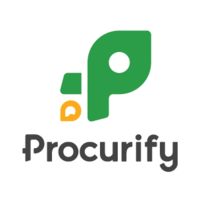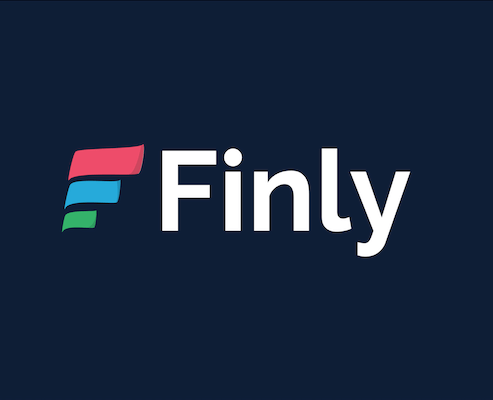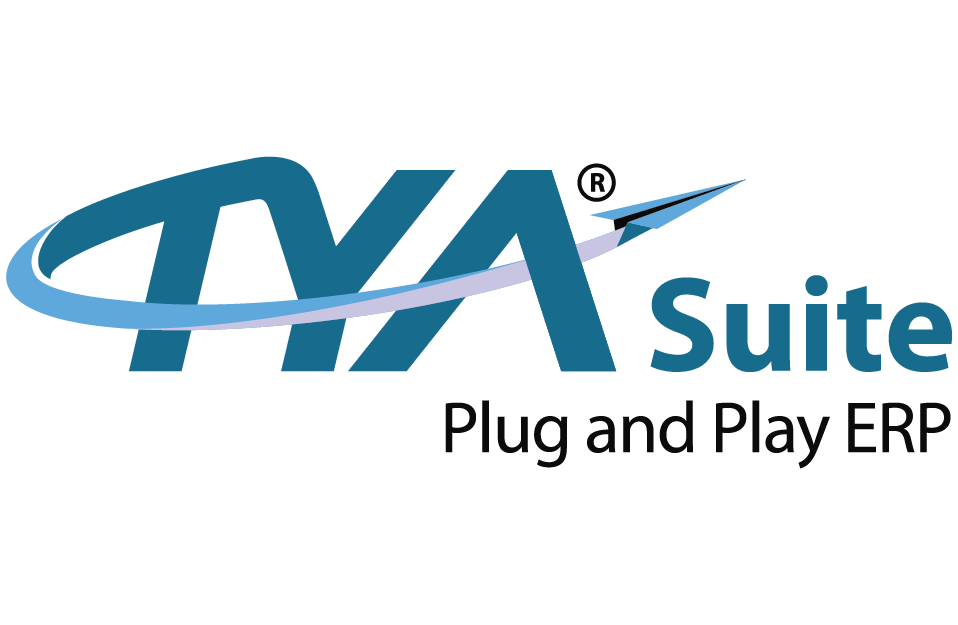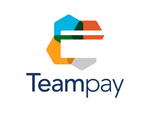What Is Spend Management Software?
Spend management software, often known as cost management software or procurement software, is a digital tool that allows businesses to track and control their spending on goods and services. With the growing complexity of corporate operations and the advent of remote labor, organizations of all sizes must prioritize efficient and streamlined spend management.
At its heart, spend management software enables firms to track and manage all parts of their costs, including budget approvals, purchase orders, invoicing, and payment processes. This software often interfaces with other financial systems, such as accounting software, to provide a more complete picture of the company's financial health.
One of the primary benefits of spend management software is its ability to automate manual procedures and processes, saving firms time and resources. This software allows users to set spending restrictions, build approval workflows, and provide statistics and analytics to help them make better decisions. It also enables computerized and paperless procedures, lowering the chance of human error while increasing total efficiency.
Furthermore, spend management software helps firms understand their spending patterns and trends, allowing them to uncover cost-cutting possibilities and negotiate better terms with suppliers. It also guarantees that company policies and government regulations are followed, reducing the risk of fraudulent activity and fines for noncompliance.
When selecting spend management software, purchasers should evaluate their individual company requirements, the product's scalability, and interoperability with existing systems. They should also look at features like mobile accessibility, customized reporting, and data security measures to ensure a smooth and secure user experience.
What Are The Recent Trends In Spend Management Software?
In recent years, organizations of all sizes have adopted Spend Management Software at a rapid pace. This tendency can be linked to the advantages it provides in terms of cost savings, process efficiency, and data transparency.
Let's look at some of the most recent Spend Management Software trends that customers should be aware of.
1. Cloud-Based Solutions: One of the most significant trends in Spend Management Software is the transition to cloud-based solutions. This lets organizations to access software from anywhere at any time, eliminating the need for costly IT infrastructures. Additionally, the cloud provides scalability and flexibility, allowing businesses to expand and adapt as their needs evolve.
2. Artificial Intelligence And Automation: Another important trend in Spend Management Software is the incorporation of artificial intelligence and automation. This technology allows the software to automatically categorize and analyze spending data, uncover cost-saving options, and even recommend better supplier deals. This allows organizations to save time and enhance accuracy in their expenditure management operations.
3. Mobile Accessibility: With the advent of remote work and mobile devices, Spend Management Software vendors are providing mobile access to their platforms. Employees may examine and authorize purchases on the fly, giving organizations real-time spending data and enhancing overall efficiency.
4. Focus On Data Visualization: Modern Spend Management Software systems have extensive reporting and data visualization features. This enables firms to acquire meaningful insights into their spending habits, find cost-cutting opportunities, and monitor critical performance indicators. Businesses can manage their budgets more efficiently and make smarter decisions using interactive dashboards and customisable reports.
5. Integration With Other Business Systems: To streamline operations and enhance data quality, Spend Management Software is rapidly being integrated with other business systems such as ERP, accounting, and project management software. This enables seamless data flow and removes the need for human data entry, lowering the possibility of errors.
Benefits Of Using Spend Management Software
Introduction: Spend management software is a solution that helps firms track and control their expenses more effectively. It automates all aspects of spending management, from budgeting and tracking to approval and reporting. This type of software provides numerous advantages for firms of all sizes, making it an indispensable tool for improving financial management.
Advantages of Using Spend Management Software:
1. Increased Visibility And Control: One of the primary advantages of adopting spend management software is more visibility and control over corporate spending. This program gives real-time expenditure information, enabling organizations to manage and monitor their expenses at any time. With this level of transparency, firms may make more informed and smart decisions regarding their spending.
2. Increased Efficiency: Another key benefit of expenditure management software is its capacity to streamline the cost management process. Manual expense monitoring and approval processes can be time consuming and error-prone. By automating these procedures, the program streamlines the entire process, decreasing the time and effort required to manage spending.
3. Cost Savings: By optimizing spending management, spend management software can help firms save money over time. Businesses can save money by identifying and reducing excessive spending thanks to improved visibility and control. The software also speeds the approval process, preventing delays and late penalties.
4. Improved Compliance: Spend management software also helps firms adhere to their spending policies and regulations. It offers a consolidated platform for tracking all expenses, ensuring that spending adheres to predefined guidelines. This can help you avoid non-compliant expenditure and related legal or financial implications.
5. Streamlined Auditing And Reporting: Without automation, audit preparation and reporting can be time-consuming and laborious. Spend management software makes this process easier by automatically recording and arranging spending and producing reports as needed. This not only saves time, but also assures that financial reports are accurate and transparent.
6. Interaction With Other Systems: Many expenditure management software alternatives allow for interaction with other existing corporate systems, such as accounting and ERP systems. This simplifies the flow of data and reduces the need for human data entry, enhancing efficiency and lowering the chance of errors.
7. Scalability: As a business grows, so do its expenses. Spend management software can handle this expansion since it is highly scalable, making it appropriate for enterprises of all sizes. As a company grows, the program can accommodate larger and more complicated expenditure management requirements, making it a long-term option.
Important Factors To Consider While Purchasing Spend Management Software?
When it comes to corporate operations, managing expenses and reducing spending is critical to success. Spend management software can help firms streamline their procurement procedures, track expenditure, and optimize budget allocation. However, with so many options on the market, it can be difficult for customers to select the best spend management software for their unique requirements.
To make the decision-making process easier, here are some crucial elements to consider when selecting expenditure management software.
1. Budget: The first and most important thing to consider is your budget. Spend management software can include simple to extensive functionality, and the fee varies correspondingly. Determine your budget and then shortlist software that works within it.
2. Features: Next, determine what features your firm requires in a spend management program. Budget tracking, cost tracking, invoice management, and approval workflows are some of the most important elements to consider. Consider your present procedures and pain areas to evaluate which features will be most valuable to your company.
3. Integration: Spend management software should work seamlessly with your existing systems. This enables a smooth data transfer and eliminates the need for manual data entry, saving time and lowering the possibility of human error. Make that the program is compatible with your accounting, ERP, and other systems.
4. Scalability: Businesses are continuously growing and adapting, therefore your spend management software should be able to adapt to your changing needs. Look for a solution that can be quickly scaled up or down based on your needs, with minimal impact on business operations.
5. User-Friendly Interface: A user-friendly interface is vital for having a favorable software experience. It should be simple to use and understand, especially for non-technical users. Consider getting a demo or trial to evaluate the software's UI and see whether it meets your organization's needs.
6. Security: Data security should be a major issue for any firm, particularly one dealing with financial data. To protect your sensitive data, look for spend management software that includes solid security features such as encryption, user access control, and data backups.
7. Customer Support: Reliable customer service is vital for any software purchase. Look for a company that provides thorough customer assistance via phone, email, and online chat. It is also beneficial to study reviews and ratings from existing customers to have an understanding of their interactions with the software's support service.
What Are The Key Features To Look For In Spend Management Software?
When it comes to selecting the best Spend Management Software for your company, there are a few crucial characteristics to consider to ensure you make an informed decision.
Let's take a deeper look at these key features:
1. Expense Management: One of the key purposes of Spend Management Software is to track and manage spending. Look for software that has advanced expenditure management capabilities, such as the ability to categorize expenses, establish spending restrictions, and generate custom reports.
2. Budgets And Forecasts: A decent Spend Management Software should also have comprehensive budgeting and forecasting features. This will enable you to create realistic spending goals, track budget performance, and accurately estimate future spending patterns.
3. Purchase Order Management: Efficient purchase order (PO) management is essential for budgeting and keeping correct financial records. Look for software that helps you to make and track purchase orders, handle approvals, and link them to invoices.
4. Vendor Management: To properly control your spending, you must first understand your vendor connections. A trustworthy Spend Management Software should include features like vendor performance tracking, contract management, and vendor communication tools.
5. Integration With Other Systems: Choose Spend Management Software that interfaces easily with other financial, procurement, and accounting systems and tools. This will help to streamline operations and lower the chance of errors.
6. Customization And Scalability: Every organization has different spending needs, so seek for software that provides for flexibility and scalability. This ensures that the program can adapt to your evolving business needs.
7. Mobile Access: In today's fast-paced corporate environment, having access to data on the go is critical. Look for Spend Management Software that includes a mobile app or web interface, allowing you to manage your spending from anywhere, at any time.
8. Analysis And Reporting: Comprehensive analytics and reporting skills are required for understanding spending trends and making informed decisions. Look for software that includes visual dashboards, bespoke reports, and automated alarms.
9. User-Friendly Interface: The software should be simple to navigate and operate, with a user-friendly interface. This not only saves time, but also shortens your team's learning curve and increases acceptance rates.
By taking into account these essential aspects, you can properly evaluate and select Spend Management Software that best meets your company's goals and budget. As always, we recommend conducting extensive study and comparing several possibilities before making a final selection.
Why Do Businesses Need Spend Management Software?
Spend management software is an indispensable tool for businesses of all sizes and sectors. This sophisticated program enables businesses to improve their spending procedures, monitor expenses, and get greater control over their total budget. In today's competitive market, every firm is seeking for ways to boost efficiency and reduce expenses, therefore spend management software is an essential investment.
Here are some important reasons why firms use expenditure management software:
1. Streamline Expenditure Processes: Manually recording and managing expenses can be time-consuming and error-prone. Spend management software automates and streamlines these operations, increasing their efficiency and accuracy. This saves crucial time for staff, allowing them to concentrate on more pressing responsibilities.
2. Improve Visibility And Control: Businesses must have a comprehensive perspective of their spending in order to make informed decisions. Spend management software gives firms real-time visibility into all of their expenses, allowing them to uncover cost-cutting opportunities. It also aids in the identification of fraudulent or non-compliant spending, hence enhancing overall management and compliance.
3. Simple Spending Tracking And Reporting: Spend management software enables the easy recording and reporting of all corporate expenses. This reduces the need for human data entry and reconciliation, lowering the risk of errors. Businesses that use customisable reporting tools can quickly generate reports to assess expenditure patterns and make data-driven decisions.
4. Cost Savings: By streamlining expenditure processes, firms can save money on a variety of expenses, including employee reimbursements, supplier payments, and travel costs. Additionally, spend management software assists in negotiating better prices with suppliers and identifying cost-saving options, resulting in significant cost reductions.
5. Enhances Budgeting And Forecasting: Effective budgeting is essential for organizations to manage their finances properly. Spend management software offers significant insights into spending habits, allowing firms to build more accurate budgets and projections. This results in more effective financial planning and decision-making.
How Much Time Is Required To Implement Spend Management Software?
The process of implementing Spend Management Software varies depending on your organization's individual needs and expectations. However, it can take anywhere between 3 and 6 months to properly integrate the program and reap its benefits. Data collection, software setup, user training, and data migration are all typical aspects of the implementation process.
This involves collaboration and input from multiple departments, as well as the software provider. To guarantee a seamless and successful implementation, adequate time and resources must be allocated to each stage. The intricacy of your organization's spending procedures, as well as the amount of users who will utilize the program, can all have an impact on the implementation time.
Organizations with various locations or departments may need more time for implementation than smaller organizations. Furthermore, some Spend Management program suppliers offer a staggered installation method, allowing firms to gradually roll out the program in multiple departments or modules. This can have an impact on the total implementation timeline.
It is important to note that, while deploying Spend Management Software may take some time, the benefits it provides, such as streamlining spending procedures, enhancing data integrity, and boosting cost savings, make it a worthy long-term investment. As a result, allocating adequate time and resources is critical for successful implementation.
What Is The Level Of Customization Available In Spend Management Software?
Spend management software is a vital tool for firms that want to efficiently control their spending and money. One of the most important aspects to consider when selecting expenditure management software is the level of flexibility available. Customization allows firms to adjust the software to their specific needs and operations. Most spend management software allows for moderate to high levels of customization.
This means that firms can customize the program to meet their own needs and workflow. Customization choices might range from basic branding to complicated connections and customizations. Branding customization allows organizations to personalize the software by adding their own logo, color scheme, and other visual aspects. This not only improves the brand's image but also generates a sense of familiarity among users.
Another key component of customisation is the ability to specify user roles and permissions. This enables firms to manage access to various features and data, ensuring that only authorized staff can view or alter certain information. It also helps to ensure data security and compliance. Spend management software also allows you to customize budgets, expense categories, and approval protocols.
This enables organizations to customize the program for their own budgeting and cost management processes, making it more effective and precise. Some advanced expenditure management software also includes API interface options, which allow firms to link the software to their existing systems such as accounting software, ERP systems, and others. This improves the overall spend management process by eliminating the need for human data entry.
Which Industries Can Benefit The Most From Spend Management Software?
Spend management software is a useful tool that helps firms track, analyze, and manage their spending. This program, which automates and streamlines the purchase process, can dramatically cut expenses, boost efficiency, and improve overall financial management. But which industries will profit the most from this invaluable tool?
1. Retail & E-commerce: Retail and e-commerce enterprises handle a large volume of transactions and purchases. With spend management software, these industries may better track their spending, discover patterns, and negotiate better terms with suppliers. This can help them optimize inventory levels, eliminate waste, and eventually boost profit margins.
2. Manufacturing: Manufacturing organizations have complex supply chains that demand a lot of raw materials and resources. Spend management software can assist these businesses in tracking their procurement procedures, identifying cost-saving options, and ensuring timely delivery of goods. This can increase overall production efficiency and save operational expenses.
3. Healthcare: The healthcare industry has special purchasing requirements and must stick to rigorous budgetary limits. Healthcare firms can use spend management software to stay within budget while still acquiring high-quality medical supplies, equipment, and medication. It can also assist them uncover cost-cutting options and enhance their financial management.
4. Professional Services: Professional services, such as consulting and law companies, incur a significant level of spending for client meetings, travel, and other operating costs. Spend management software can assist these industries in tracking and categorizing their expenditure, making it easier to report and evaluate costs. This allows them to better allocate resources and appropriately bill clients for expenses incurred.
5. Hospitality: The hospitality business, which includes hotels, restaurants, and event organizing organizations, is in constant need of supplies and services. Spend management software can assist these organizations in streamlining their procurement operations, tracking their expenditure, and negotiating better agreements with vendors. This can lead to significant cost reductions and higher profitability.
Conclusion
To summarize, investing in spend management software is a sensible investment for any firm trying to properly manage its spending and increase profitability. Throughout this buyer's guide, we've covered the numerous aspects to consider when selecting spend management software, such as features, pricing, implementation, and support.
Before deciding on spend management software, you should first examine your company's objectives and goals. This will assist you in determining which features are vital for your business and ensuring that you make an informed decision. Pricing is also an important consideration, as it varies greatly amongst software vendors.
While it may be tempting to go for a cheaper alternative, it is critical to look past the initial cost and examine the long-term benefits and return on investment. Another important aspect to consider is the implementation procedure. It is critical to select a software provider that provides a seamless and efficient implementation process, since this reduces disruptions and ensures a quick return to normal business activities.
Furthermore, it is critical to choose a software vendor that provides continuing support and assistance. This ensures that you have a trustworthy and qualified partner to turn to if you encounter any problems or have any questions. In short, spend management software can help your firm by streamlining expenditure, lowering costs, and increasing overall efficiency.
By carefully evaluating all of the elements presented in this article, you will be able to make an informed selection that fulfills your business needs while also helping you reach your financial objectives. With the correct spend management software, you can gain control over your expenditure and set the road for future growth and success.






















